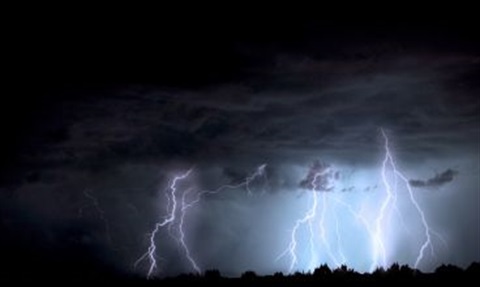Floods and Storms

In New South Wales storms and floods are natural part of our climate and cause more damage than any other disaster event.
In preparing for either a storm or flood, there are some simple precautions that people should take in order to minimise the potential impact.
Floods
Flooding occurs when water extends over what is usually dry land. This can happen when it escapes from a natural watercourse, such as a lake, river or creek. It can also happen when water is released from a reservoir, canal or dam.
Flooding can be a positive occurrence by providing water to wetland ecosystems, replenishing soil moisture and nutrients and providing habitat and food for wetland wildlife.
Flooding can also cause substantial damage to homes and businesses, critical infrastructure, and farming. However, the negative effects of floods can be reduced with good planning and the right actions.
If you live, work or visit a flood-prone area, there are 8 tips you can do now to prepare for floods:
Know your Risk
- Find out about the local flood history
- Know the heights at which your home, business and/or property could be affected by floodwater
- Contact your local council if you want more information on how flooding could directly affect your property
- Talk with people who have been in the area a long time for about their experiences of floods locally
- Be aware of the natural signs of flooding
- Know how you may be warned of possible flooding
Know Where to Go
- Find the safest route to travel in the event that you might need to evacuate and identify the height at which your evacuation route may be cut
- Find out where any evacuation centres could be set up in your area
- Check with friends and relatives outside the flood prone area to organise a place to go
Know Who to Call
- For emergency help in floods and storms, call the NSW SES on 132 500
- Keep local emergency numbers handy (near your phone, in your mobile and on your fridge)
- In a life‐threatening emergency, call 000 (triple zero)
Get your Kit Together
Put together an emergency kit for your home or business.
Prepare Now to Act Early
- Talk with your local NSW SES members about being FloodSafe
- Know the triggers, warnings and natural signs of flooding so that you can act quickly
- Practice your plan and share it with neighbours
Check you Insurance
- Make sure your insurance is suitable to your situation and risk
- Check the coverage is adequate
- Make sure your insurance is current
Listen to Local Radio
- Listen to local radio for information, updates and advice
- Information will also be posted through social media
Storms
Storm are the most frequent emergency affecting people in NSW and can occur at anytime of the year.
Storms can be accompanied by torrential rain, strong winds, large hailstones and lightening.
Storms may result in flash flooding, un-roofed buildings, damaged trees and power lines and can pose a significant safety risk to people, animals, households and businesses.
Preparation and Safety During Storms
Check Forecasts and Warnings
Check the Bureau of Meteorology website or app for the latest forecasts and warnings with what the weather is doing in your area.
When a Severe Thunderstorm Threatens
- Check the Bureau website or app and listen to your local radio station for storm warnings and updates.
- Shelter and secure pets and animals.
- Check your yard or balcony and secure or store items that could blow around in strong winds, e.g. garden furniture, trampolines.
- Park vehicles under solid shelter or cover with firmly tied tarpaulins/blankets.
- Secure all external doors and windows and draw curtains.
- Put valuables, medications and spare warm clothing in plastic bags with your emergency kit and keep it handy.
When the Thunderstorm Strikes
- Stay inside and shelter well clear of windows, doors and skylights.
- Don't use a fixed telephone during a thunderstorm due to lightning danger.
- Avoid touching brick or concrete, or standing bare-footed on concrete or tiled floors.
- Keep checking the Bureau website or app and listen to your local radio station for storm warnings and updates.
If Caught Outdoors
- If driving, don't drive into water flowing over roads.
- Don't drive, walk, ride or swim through flood waters.
- Seek shelter in a 'hard-top' (metal-bodied) vehicle or solid building but avoid small open structures or fabric tents.
- Never shelter under small groups of (or single) trees.
- If far from shelter, crouch (alone, feet together), preferably in a hollow. Remove metal objects from your head and body. Don't lie down flat but avoid being the highest object in the vicinity.
- If your hair stands on end or you hear 'buzzing' from nearby rocks, fences etc., move immediately. At night, a blue glow may show if an object is about to be struck (St. Elmo's fire).
- Don't fly kites or model aeroplanes with control wires.
- Don't handle fishing rods, umbrellas or golf clubs etc.
- Stay away from metal poles, fences, clotheslines etc.
- Don't ride horses, bicycles or travel in open vehicles.
- If swimming, surfing etc., leave the water immediately.
- If boating, go ashore to shelter as soon as possible.
- Be sure the mast and stays of a sailing boat are adequately 'grounded' to the water.